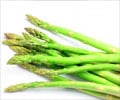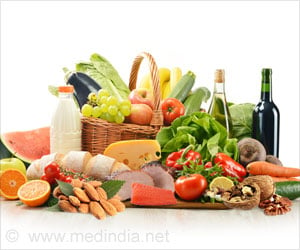Consumers are five times more likely to identify healthy food when they see colour-coded traffic light nutrition labels than when labels...
Consumers are five times more likely to identify healthy food when they see colour-coded traffic light nutrition labels than when labels present the information numerically by showing what percentage of the recommended daily nutrient intake each portion provides, new research finds.
Some governments are trying to improve the quality of nutrition information that consumers have access to in supermarkets by adding labels to the front of food packages, but there is no standard approach, not all products have labels and in many countries several different systems are used."Food manufacturers are currently allowed to use any labelling system they prefer on the front of food packages. In some countries this has led to a plethora of different systems appearing on supermarket shelves, which only serves to confuse consumers more and does not allow them to quickly and accurately identify healthy products," said Bridget Kelly, whose study was presented on Friday at the European Congress on Obesity.
"The food industry tends to favour the percentage daily intake method (known as Guideline Daily Amount in some countries), but our research indicates that the traffic light system is the most effective and that a consistent labelling approach across all food products is needed. This is unlikely to be achieved without government regulation," said Kelly, a nutritionist at the Cancer Council, New South Wales in Australia.
Kelly and her colleagues aimed to determine the most acceptable and effective food labelling system for consumers. Four different approaches were tested on 790 Australians to determine their preferences and ability to compare the healthiness of mock food products, using two variations of the traffic light system and two variations of the percentage daily intake system. Each person was exposed to only one type of nutrition label, allowing each system to evaluated on it own merits without the influence of the others.
Traffic light labelling uses colours to rate the nutritional content of food according to how healthy it is. A common version uses a panel with red, amber or green dots to rate the food's salt, sugar, saturated fat and total fat content separately. A variation adds a single coloured dot to give an overall rating, rather than just rating separate nutrients.
The percentage daily intake system and its variations present, for each of the key nutrients, the proportion of the government recommended adult daily intake that a serving of the product contains.
Advertisement
"As a result of these findings, we are recommending that mandatory traffic light labelling regulation be introduced in Australia. The labels should be applied to all processed retail grocery food and drinks at first, and consideration should be given to extending that to restaurant chains with standard menu items," Kelly said.
Advertisement
Kelly said that further research is needed to determine whether the traffic light system proves to be as effective in other countries, but that the study showed it could be used equally well by all consumers, regardless of ethnicity, gender and socioeconomic status.
The study was funded by the New South Wales Health Department, the University of Sydney and several Australian public health and consumer organisations.
Source-Eurekalert
LIN















